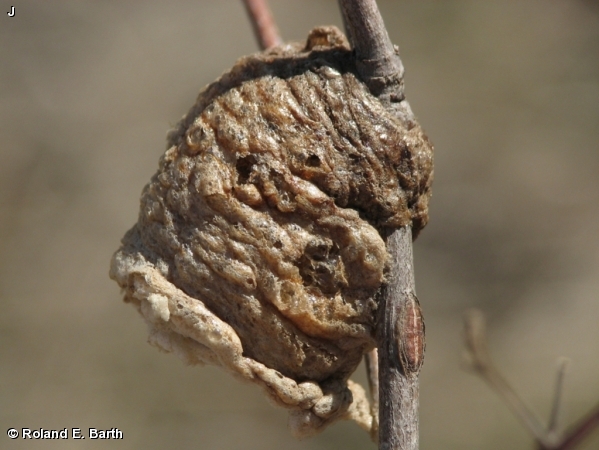
Tenodera sinensis
MANTIDS (Mantidae)
Description
This introduced mantid grows to more than 3 inches or 75 mm long. It has a tan to light green body with a triangular head, long arms and wings. Image “D” shows a female with its extended abdomen. But the mantids are difficult to identify to species from images alone. Even the experts tend to disagree. They eat a variety of insects to include butterflies, bees and wasps. Mantids overwinter as eggs, deposited in a large, 1 inch long mass, called an ootheca, deposited by the female on a twig or stem (J,K). The nymphs hatch and disperse by wind in the spring.
Occurrence
This mantid is believed to be fairly common in our two nature centers, but they are not often seen because of their slow motion and camouflage.
Comments
These mantids were introduced from China in the late 1800’s as a beneficial insect.
Disclaimer: The content of NatureSearch is provided by dedicated volunteer Naturalists of Fontenelle Forest who strive to provide the most accurate information available. Contributors of the images retain their copyrights. The point of contact for this page is: Loren Padelford.











